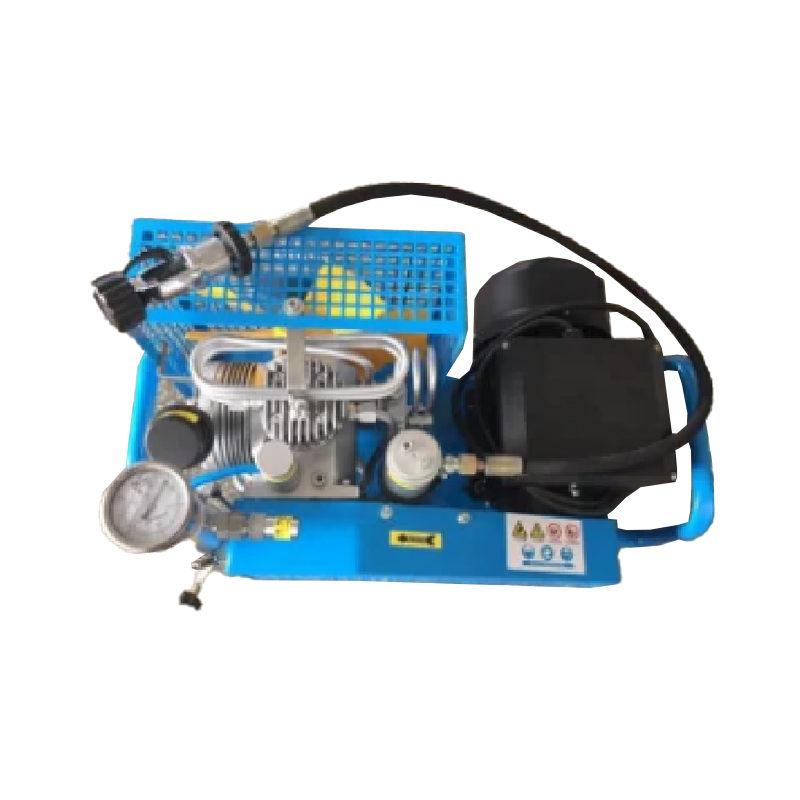Two-layer Aramid Safety Hood
Cat:Firefighting Hood
The Two-Layer Aramid Safety Hood is engineered to safeguard professionals working in high-temperature, flame, and hazardous environments. Engineered ...
See DetailsEnsuring consistent pressure output is crucial for a breathing air compressor to maintain safety and effectiveness. Here's how it typically achieves this:
Precision Regulation: In breathing air compressors, precision pressure regulation is the cornerstone of ensuring a safe and reliable air supply for users. This regulation begins with the selection of high-quality pressure regulators, which are engineered to exacting standards to provide consistent and accurate control over the compressed air output. These regulators are often designed with fine-tuned mechanisms that allow for precise adjustment of pressure settings within narrow tolerances.
Pressure Monitoring: Pressure monitoring systems in breathing air compressors operate as the vigilant guardians of air quality and safety. These systems employ a network of sensors strategically placed throughout the compressor's air pathway to continuously measure pressure levels at various stages of compression and delivery. These sensors provide real-time feedback to sophisticated electronic control units, which analyze the data against predetermined pressure parameters. Any deviation from the specified range triggers responsive actions, such as modulation of compressor speed or adjustment of valve positions, to swiftly restore pressure to the desired level. The integration of redundant sensors and fail-safe mechanisms ensures the reliability and accuracy of pressure monitoring, minimizing the risk of pressure-related incidents.
Automatic Shutdown: Automatic shutdown features represent the last line of defense against pressure anomalies that could compromise user safety. These features are engineered with redundant safety interlocks and emergency protocols designed to activate in response to critical pressure deviations or system failures. Upon detection of an abnormal condition, such as a sudden pressure surge or drop, the compressor initiates a rapid shutdown sequence to halt operation and prevent further escalation of the issue. This automated response protects users from potential hazards associated with over-pressurization or loss of pressure, mitigating risks of injury or equipment damage. Comprehensive diagnostic capabilities built into modern compressors enable post-event analysis to identify root causes and facilitate corrective actions for enhanced system reliability.
Quality Components: At the heart of every reliable breathing air compressor lies a meticulously selected array of components engineered for performance, durability, and compatibility with stringent safety standards. Pressure sensors, critical for accurate pressure measurement, are chosen based on their precision, reliability, and ability to withstand harsh operating conditions. Similarly, pressure control valves and seals are crafted from high-grade materials selected for their resistance to corrosion, wear, and contamination. Each component undergoes rigorous quality assurance processes, including material testing, performance validation, and compliance verification, to ensure conformance with industry regulations and user safety requirements.
Pressure Relief Valve: Pressure relief valves serve as vital safety mechanisms, providing fail-safe protection against pressure overloads that could jeopardize user safety or system integrity. These valves are meticulously engineered to operate with precision and reliability under a wide range of operating conditions. When activated, typically in response to excessive pressure buildup beyond predetermined thresholds, the relief valve rapidly opens to release compressed air safely to the atmosphere, thereby alleviating the pressure within the system. The design and placement of relief valves are carefully considered to ensure optimal performance and effectiveness in safeguarding against over-pressurization events.
Mch-6 Breathing Air Compressor
